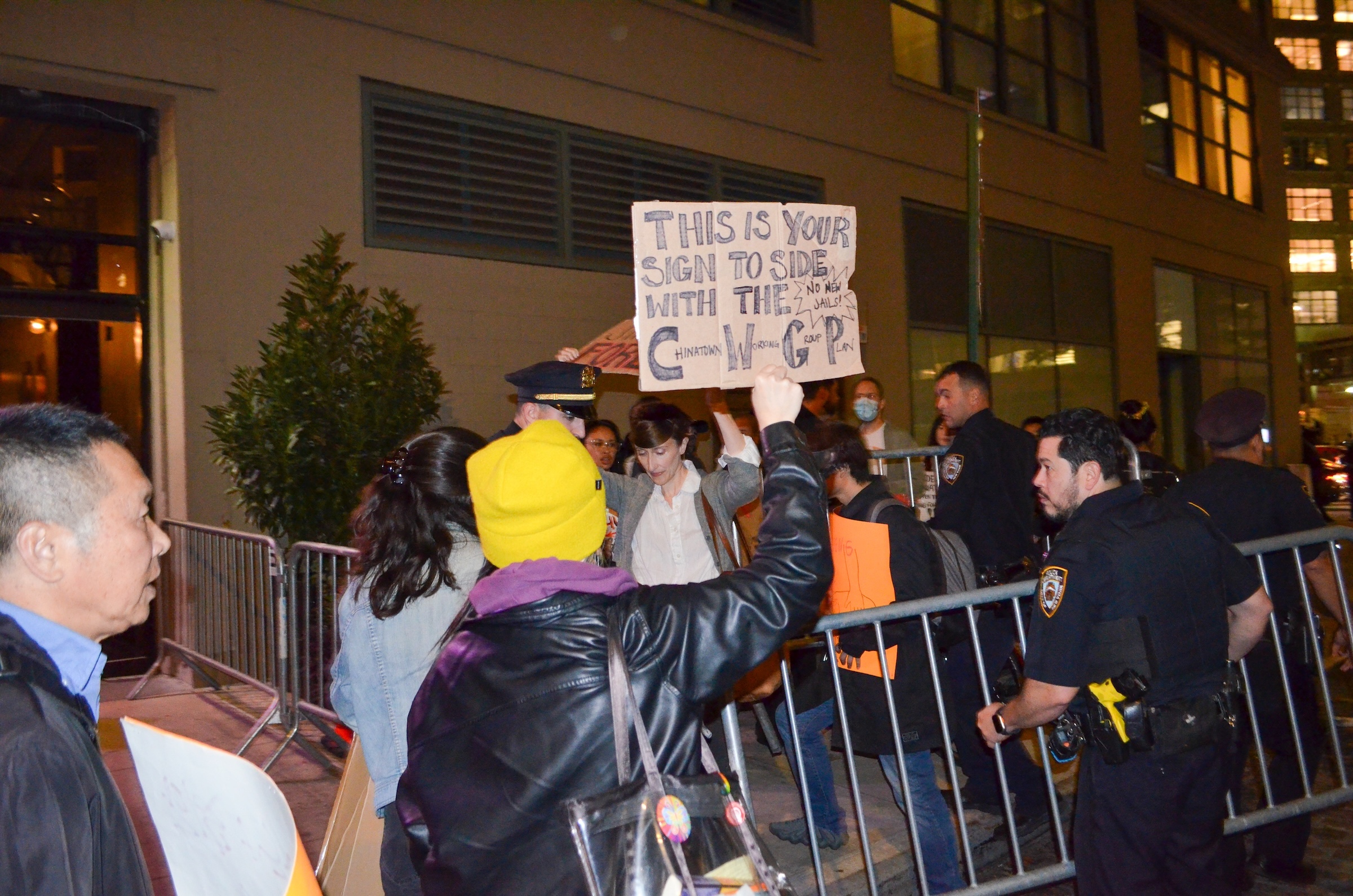New York City Mayor Eric Adams’s criticized plan to “beautify” parts of Chinatown is moving forward as the Department of Cultural Affairs (DCLA) begins to search for artists for the project.
DCLA issued a Request for Expressions of Interest for artists to help create a $2.5 million “Chinatown Welcome Gateway” in the neighborhood’s Kimlau Square last week. Adams first revealed plans for a permanent gateway last February as part of his administration’s $56 million public space overhaul dubbed the “Chinatown Connections Project.”
The city said the updates, including reducing the five-way intersection at Kimlau Square to a four-point crossing, would improve pedestrian traffic and safety while fulfilling a “longstanding community desire for an iconic symbol,” a gateway, in the neighborhood.
Some anti-displacement advocates and residents, however, fear the greater “Chinatown Connections” project will distract from rampant gentrification and overpolicing occurring in the neighborhood. Last year, in one phase of “Chinatown Connections,” the city opened applications for artists to paint concrete barriers along the NYPD-blockaded Park Row, a project locals said they didn’t ask for. The gateway portion of the multi-million dollar alteration, the city claims, would “commemorate the cultural heritage of the neighborhood” and drive visitors to local businesses.
“What Chinatown needs, much more than a flashy $2.5 million ‘Welcome Gateway,’ is protection from predatory development,” Cindy Hwang, an organizer for the advocacy group Art Against Displacement (AAD), told Hyperallergic in a statement. Hwang pointed to the community-led Chinatown Working Group Plan, a rezoning proposal that would establish a height cap for new buildings, limits on luxury hotel development, and more affordable housing to curtail gentrification.
In a statement to Hyperallergic, a DCLA spokesperson said the city is consulting elected officials and “community stakeholders” to inform the design of the gateway. The selected artists will work with the architecture firm Marvel to decide on the final output, the spokesperson said.
While the city told Hyperallergic that artists from Chinatown are encouraged to apply, some artists have abstained from applying to other projects included in the “Chinatown Connections Project” over concerns that these will overshadow the needs of the local community.
According to DCLA, the gateway could be installed by January 2030, just two years before the tallest jail in the world — the Manhattan Borough-Based jail — is expected to be completed just blocks away from the redesigned square.
Local artists, including some who belong to AAD and the Chinatown Art Brigade, have long opposed luxury developments in the neighborhood and the creation of the so-called “jailscraper,” which would become part of the borough-based jail system meant to replace the notorious Rikers Island jail complex before its mandated closure in 2027. The Chinatown jail is reportedly five years behind schedule in construction.
Yin Kong, co-founder and director of Think!Chinatown, an arts and neighborhood engagement nonprofit, told Hyperallergic that the issue of constructing a gateway in Chinatown isn’t black or white. The organization, Kong said, is working as a community engagement consultant on the project.
Last year, Kong co-curated Making or Faking Chinatown: Representing People, Place, and Culture, an exhibition exploring gateways in Chinatowns across North America. In an article published in October by Urban Omnibus, Kong and exhibition co-curator Kerri Culhane described the absence of a gateway in Manhattan’s Chinatown as “conspicuous” in the context of their presence across other such neighborhoods. Also known as Paifang 牌坊 or pailou 牌樓, the gateways carry placemarking significance, they wrote.
Think!Chinatown plans to hold a discussion on May 22 for artists interested in submitting to the city’s design competition.
“We hope this call process will find an artist who has expansive thinking about what cultural placekeeping can mean for an iconic neighborhood like Manhattan’s Chinatown,” Kong said.

